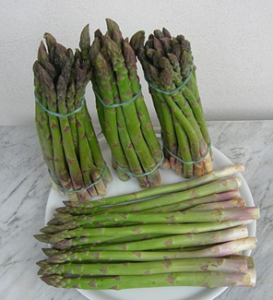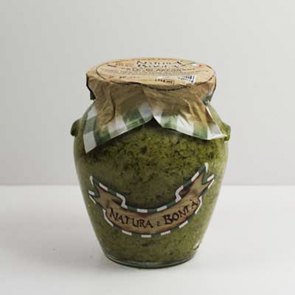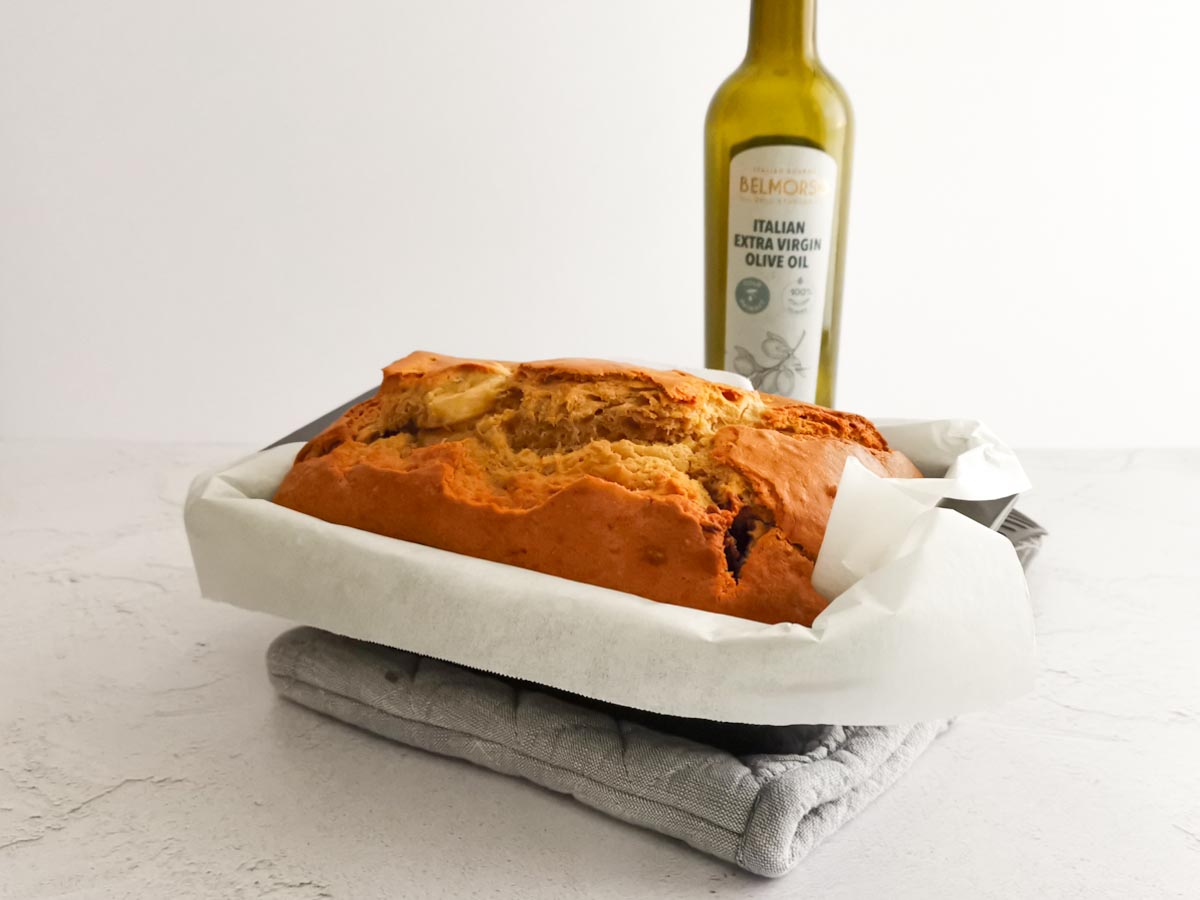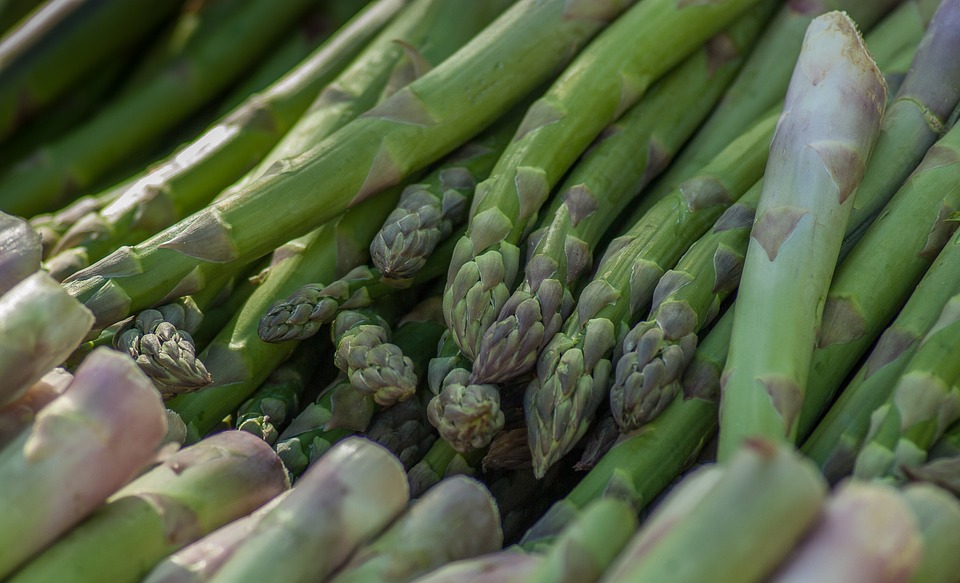
The Dinette Teller – 22. Asparagus, the Spring Table King
Asparagus is well known for its unique, savoury taste. The first asparagus of the spring start sprouting as early as March and the season ends at mid-June. Asparagus’ flavour is at its peak in May when you can find both green and the more coveted white and purple varieties on the Italian menus.
Green asparagus is extraordinary when eaten fresh. However, asparagus is also conserved using traditional canned recipes that preserve the unique taste and texture of this vegetable throughout the whole year. There is a good number of recipes that can be made using Asparagus Paté like this delicious Salmon and Asparagus Patè Linguine. Use our traditional
Use our traditional Asparagus Patè to give a boost of taste to your dishes!

HISTORY OF THE ASPARAGUS
The Egyptian are one of the first civilisations that grow and eat Asparagus in the Mediterranean, as well as in Asia and in Spain more than 2000 years ago. Also, the Romans were aware of the health benefits and aphrodisiac properties of Asparagus. The first handbooks about the harvesting cooking techniques of asparagus are dated from the 200 b.C. It is said that the Roman Emperors were so keen on asparagus dishes that they make build a special boat to carry and deliver this delicious vegetable.
From the XV Century, the plantations of Asparagus start to be common also in France, and, from the XVI Century also in Britain.

VARIETIES
All the species are part of the “Asparagus Officinalis” family, and they differ in colour, taste and type of crop, whereas the chemical composition is always the same.
They can be grown in open fields or in peculiar greenhouses from March to June, both using the seeds and sets. A crop of asparagus begins to be productive after 2 years, and it keeps its production for almost 12 years, producing 60-100 Kg of vegetables per 100 m².

They can be divided into 4 main subspecies:
- GREEN ASPARAGUS: the most common one, the sets grow freely and they get the usual green colour thanks to the chlorophyll. They have a sharp and intensive taste. The most famous Italian varieties are “Asparago D’Altedo” and “Asparago Darbonne selection n°3”.
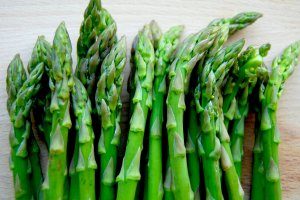
- WHITE ASPARAGUS: renowned and quite expensive for their high quality. Their characteristic is the lack of colour since they grow under the ground and therefore without natural light. For this reason, the chloropyllkian photosynthesis cannot take place and they appear completely white. Also, the taste is influenced by this process, which is more delicate and gentle. The most well-known Italian varieties are the “White Asparago of Cimadolmo”, “of Bassano del Grappa” and “of Badoere”. All of them are P.G.I. products.
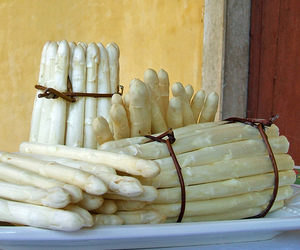
- PURPLE ASPARAGUS: they are rarer but more selected and unique. The plants are bigger and they have a characteristic violet colour. The taste is special as well, intense, delicate and generally sweeter compared to the others. There are just a few varieties of this one, amongst them, the most popular are the “Purple Asparago of Albenga”.
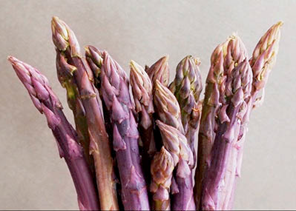
- WILD ASPARAGUS: there are a lot of wild species and the most of them grow in the woods. They are thinner and longer, and bitterer in taste. The most appreciated are the Tenuifolius, Plumosus and the Sprengeri.

COMPOSITION AND HEALTH BENEFIT
Asparagus are very low in calories – around 25 calories per 100g – but they contain a good deal of fibres, vitamin C, vitamin B and carotin.

They also are rich in mineral salts, such as calcium, phosphorus and potassium, very important for the cardiocirculatory system. Moreover, in just 100 grammes of this vegetable, we get 75% of the recommended daily dose od folic acid. This substance is really important for the increase of cells and the synthesis of new proteins, and for this reason most important in pregnant women. Furthermore, the folic acid and the vitamin B12 have a well known positive impact on the cognitive sphere, improving both the mood and the cognitive functions.
Another substance in the chromium, which is related to the insulin. It has, in fact, an indirect positive influence on the glycemia, decreasing its levels if too high, thanks to an increase in the production of the insulin itself. Therefore, their consumption is particularly recommended, so as to prevent the Type 2 Diabetes.
They are rich in Glutathione, which has an important depurative function. It plays a big role in eliminating the free radicals, which enhance the ageing process.
They also contain the amino acid “Asparagine”, a natural diuretic, which eliminates the sodium excess from the organism, and reduces cellulitis.

Finally, the good amount of inulin has great benefits on the gastrointestinal tract and intestinal flora.
Conversely, asparagus contains also uric acid, which can have a negative influence on the kidney function amongst those, who already suffer from kidney diseases. For this reason, we suggest moderating the consumption of this vegetable in this case.
HOW TO PURCHASE AND COOK ASPARAGUS
Asparagus should be hard, bright in colour and not ligneous. Otherwise, they are meant to be “old”. Check the asparagus in the middle of the bunch: they should not be rotten.
Remove the bottom parts before cooking, it corresponds to the roots and it can be very hard to eat. Remember that asparagus has a peculiarity: the bigger ones are usually the most tender, unlike most of the other vegetables.
Asparagus is perfect for every sort of meal, from appetisers to side dishes, to rice, pasta, meat and fish. They are lovely also by themselves, served with vinaigrette sauce, or just with Extra Virgin Olive Oil, lemon juice and ham.
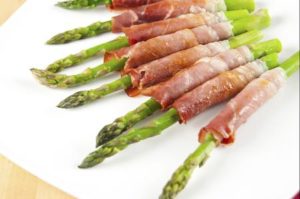
The white asparagus is delicious for soups and risotto, while the green or the wild ones are better for omelettes.
If you want to enjoy the amazing taste of the asparagus also in winter, or if you want to give a boost of taste to your dishes, just use our Asparagus Patè. It is perfect to add to your pasta and rice sauces. Also to accompany any fish and meat dishes. For instance, you can create a delicious crust on top of your haddock or just add it to the side of your favourite dishes.



